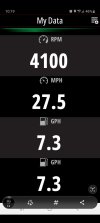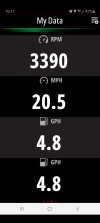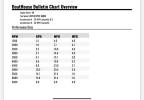I just purchased a 2024 Bennington 22' Tritoon with the Yamaha 150 4 stroke. I am just hitting 7 hrs on the engine and already under 1/2 tank left of my third full (approx. 22 gal) fill up. That's about 3 - 3-1/2hrs per full tank of gas. Also most of this has been mid throttle cruising. Is this way off what it should be? Is there options for additional fuel or auxillary tanks? Thank you for any info or advise.
Last edited:



